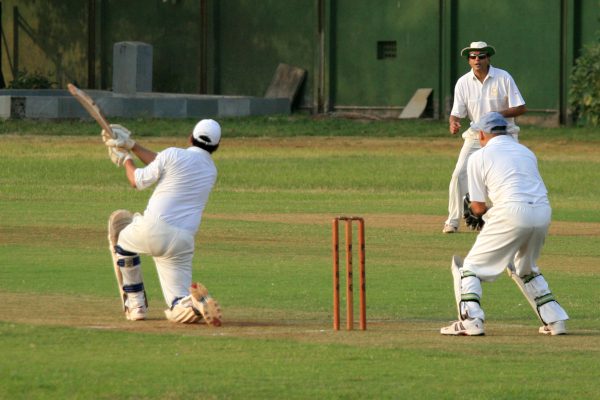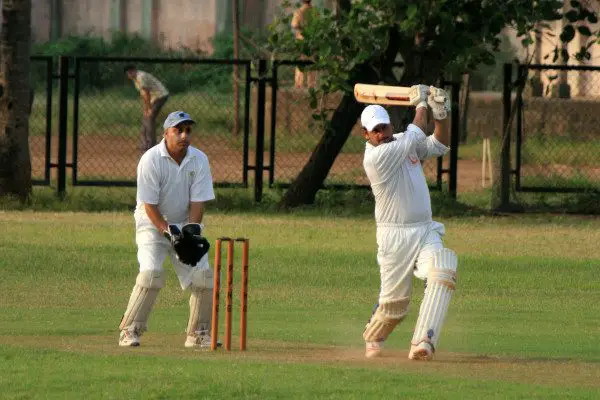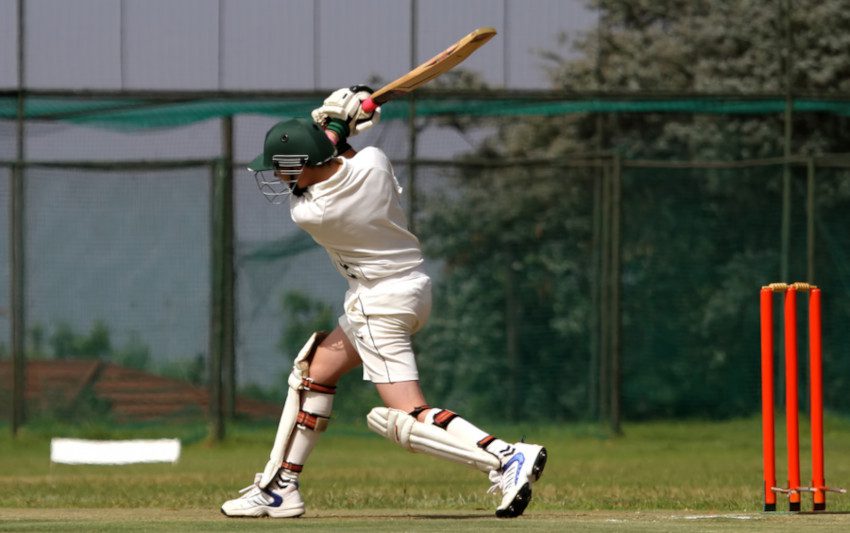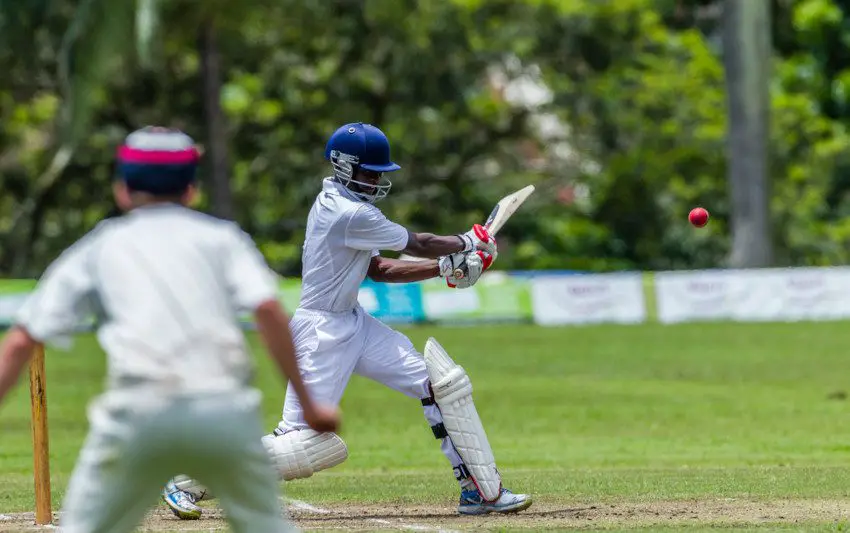Table of Contents
Hitting a six is one of the most exciting things that can happen in cricket. The thrill of seeing the ball clear the boundary rope provides a huge thrill for both the batsman and the spectators.
Power is a necessary factor to have but hitting maximums also requires great skill so, in this guide I’ll look more closely at the technique behind how to hit big sixes in cricket.
How to Hit Big Sixes in 7 Steps
Step 1: Prepare for Hitting a Six
Hitting a six can be a spontaneous reaction to a certain delivery or it can be a premeditated shot. If you’re deliberately looking to advance the score with some power hitting then you need to prepare properly. Look for gaps in the field and decide whether you are going to look for a six hitting ball or if you intend to attempt hitting a maximum before that ball is delivered.
As you wait for the delivery, stay calm and take deep, even breaths which will help you maintain focus. Keep your head perfectly still and watch the ball closely as it leaves the bowler’s hand.
Step 2: Choose Which Shot to Play
When I think about how to hit a six in cricket, my mind imagines the batsman bludgeoning the ball straight back over the bowler’s head. Alternatively, the hook is one of my favourites. There is also the lofted drive which relies more on timing while the ramp is another modern, innovative method.
As with all shots, you can choose what to do based on the type of delivery. If it’s pitched up in the ‘slot’ you can hit back over the bowler’s head. If it’s short, the hook or pull can come into play. However, when we learn how to hit a six in cricket, we should understand that there is a certain amount of premeditation.

What is a Lofted Shot in Cricket?
A lofted shot is hit in the air above fielders’ heads. It was devised in one day cricket and will often clear the infield in a power play before reaching the boundary. In the main, these are lofted drives and, if hit with enough power and timing, they will go for six.
- The perfect ball for a lofted drive is a full length although batters can use their feet to get to the pitch of the delivery.
- The batsman’s weight should come forward as they meet the ball.
- Look to hit it early, don’t try to hit too hard and extend the arms on contact.
Step 3: Keep Your Head in Line
No cricket shot can be executed properly if you don’t follow this basic piece of advice. Your head should stay in line with the ball until you’ve hit it and completed your follow through. If your head falls to the off or leg side, the body and bat will not be in alignment and the ball will not travel in its intended direction.
One tip here is to focus on the seam: Don’t take your eyes off it and that should help you to keep your head perfectly in line.
Step 4: Prepare Your Stance
The experts recommend that you prepare with a wide legged, balanced stance. Your feet should be at shoulder width apart and that balance leaves you room to adjust – i.e. – to go forward or back.
This approach can work for all six hitting methods. If you are looking to play the ball on its merits, this stance allows you to move forward or back to the ball and it can also help you defend if the delivery is more attacking. The wide legged stance also assists with premeditated shots.
Step 5: Time the Ball
As we’re learning how to hit big sixes in cricket, we think about power but timing is vital too. If you don’t hit the ball in that sweet spot, it will have less chance of going the distance.
Timing also involves meeting the ball on the right point of the downswing. The professionals can do this naturally but for us amateurs, it involves a lot of practise.

Step 6: Swing the Bat
Most players, when they start out, will use a high backlift for six hitting. The bat will then be brought down straight and at speed. Batsmen like to have space to free their arms so you will often see cricketers get their front leg out of the way to make more room.
Remember that timing is essential so the swing must meet the ball at the correct time for maximum propulsion. This is a skill that can be practised in the nets for those who are serious about learning how to hit big sixes in cricket.
Step 7: Connect and Transfer Your Momentum to the Ball
I’ve talked about the follow through in a section focused on how to play cricket shots and this is essential in terms of six hitting. As you connect with the ball, movement forward and that subsequent momentum will help it to travel further.
Get your foot to the pitch as much as possible and, as you connect, transfer the weight through the ball. Remember to follow through with the bat moving in the same direction as the ball.
Power Hitting Tips and How to Play Big Shots
You may hear professional cricketers talk about ‘range hitting.’ This is a specific technique that is used in practise and can subsequently help batters in a match situation out on the field. Range hitting simply involves receiving a ball, tossed gently into the batsman’s arc and then looking to hit it as far as you can.
This can help with one of the basic skills of a batsman: hand and eye coordination. Batsmen can also set a bowling machine to send deliveries down that would suit a six hit. They could also ask bowlers to deliver similar balls to them in the nets but they may be reluctant to do this as it could affect the bowlers’ rhythm moving into a match situation.
The Longest Sixes in Cricket
With practise and a lot of power, you may even start to hit 100 metre sixes like the professionals. Elsewhere on this site I’ve compiled a list of the longest official maximums in cricket and it will be updated as more qualifying hits are verified.
Some of the names included on the list may surprise you so head on over and find out who has scored the longest sixes in the game so far. You don’t need to hit big sixes in cricket – you only need to clear the boundary rope but maybe this list will inspire you to hit the ball further.


